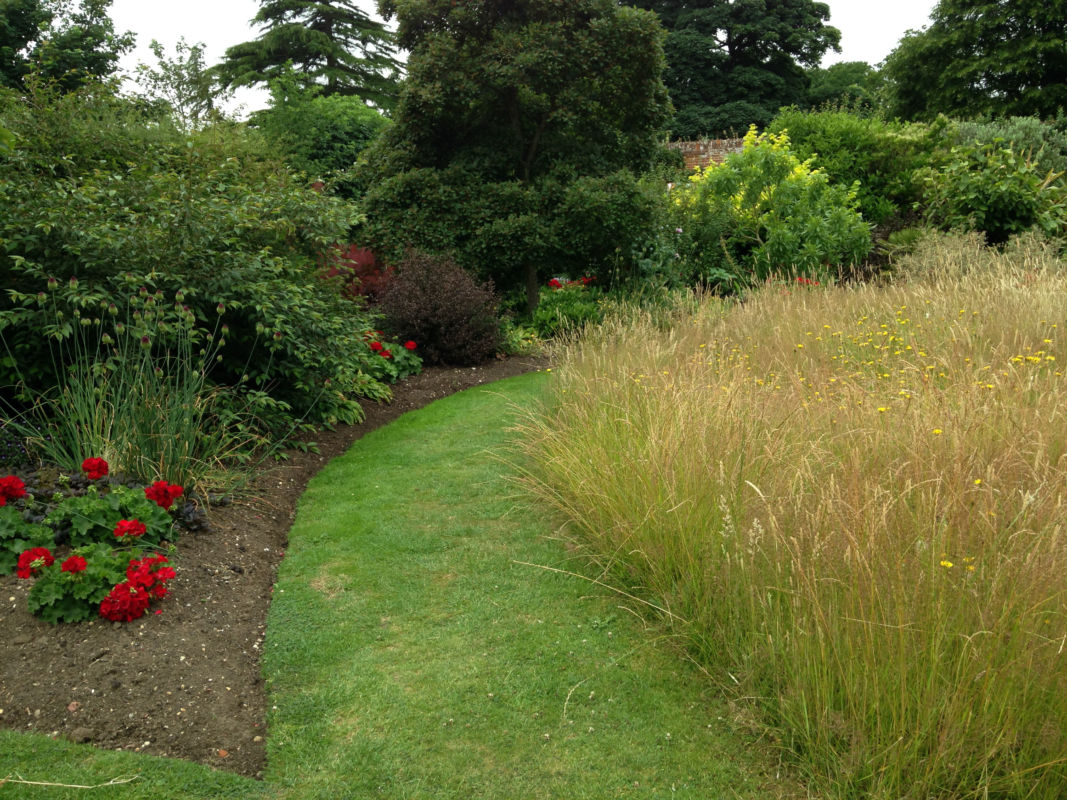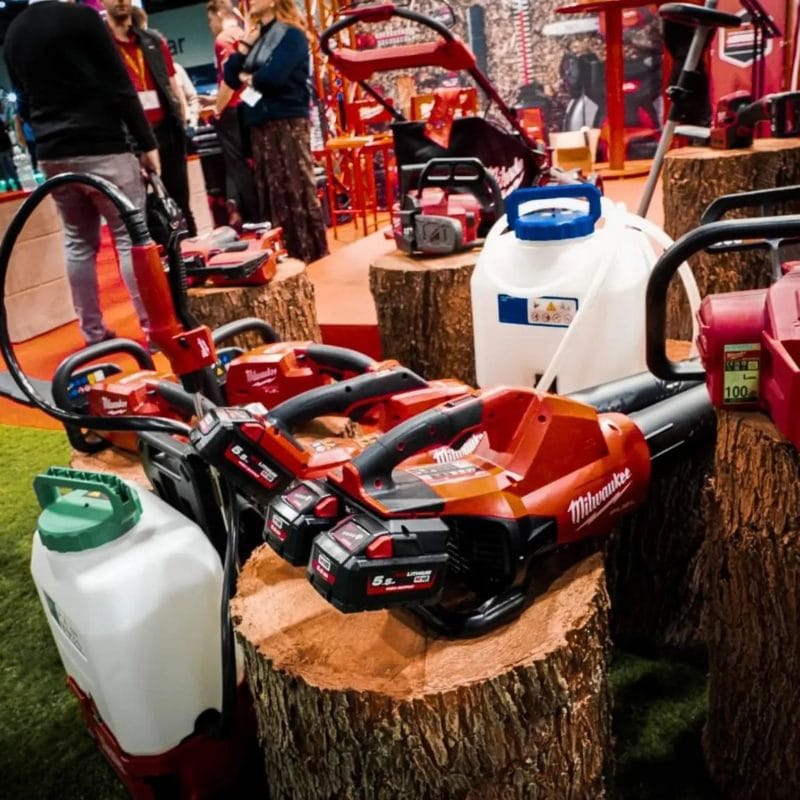What will 2023 bring in terms of weather, grass health and challenges for our lawns? Here are my lawn care predictions for 2023.
My top ten lawn care predictions for 2023
- I suspect that moss will be more noticeable than usual in the first four months of 2023
- A warm, moist February may see outbreaks of redthread disease where soil nutrient levels are low
- Poa annua is likely be to create challenges in the early part of the year, particularly for new lawns
- No Mow May is going to bring a surge of social media posts about the biodiversity benefits of letting your grass grow long
- Savvy gardeners will be raising cutting heights in anticipation of a dry summer
- Summer time hosepipe bans will make us all re-think our entire lawn management regimes
- Sales of lawn treatments will increase as more people realise that optimum plant health is key to having a beautiful lawn all year round
- The Saltex Show in November will have record visitor numbers as more and more people look for sustainable lawn care solutions
- Folks will be looking for cost effective lawn care ideas as budgets get squeezed
- More of us will switch to battery powered garden and lawn care equipment in order to make garden maintenance more affordable.

2023 Weather And Lawn Care
It’s difficult to predict exactly what the weather is going to do, but reading various articles, I think it’s fair to assume that we can expect more of what we had in 2022. Winter storms, a warm but soggy spring and a hot dry summer. What will that mean for your lawn care regime? Let’s take a look.
More Mossy Lawns Than I’ve Seen For A Long While
Already on the Premier Lawns Facebook and YouTube channels I’m seeing more questions about moss in lawns. There seems to be quite a bit of it about this year. That’s not surprising since we’ve seen ideal growing conditions for moss. If your lawn is troubled by this video offers some great tips for getting rid of moss and controlling it thereafter.
Redthread Disease Strikes When Soil Nutrients Drop
Redthread disease loves grass plants that are under stress. And apart from extreme mowing events, very little stresses a grass plant more than low nutrient levels. The wet weather we’re seeing at the moment in the UK is likely to be washing some plant nutrients out of the soil. And so if you want to avoid redthread disease in spring, you’d be wise to apply a good quality spring summer lawn feed as soon as daytime temperatures are constantly reaching 5 degrees Celsius or more.
I wouldn’t normally suggest applying nitrogen fertilisers until mid march but weather-related articles online are hinting that spring may be warmer than usual this year.
Now there’s a fine balance between daylight hours, soil temperatures and rainfall when it comes to growing healthy plants. Too much food and not enough sunshine and the plants will become etiolated (ie pale, spindly and weak). Plenty of sunshine and rain but not enough food will also weaken the grass. But if we want to avoid redthread (and we do!) We need to avoid stressing the plants. By late February, the days are getting longer and so we can be reasonably confident that if the soil is warm enough, a good feed will benefit the plants.
Click here if you want to discover more about Redthread disease
No Mow May
I love No Mow May! It absolutely fascinates me to see what happens to grass when it’s not mown. Even in a relatively weed-free lawn, it’s incredible how many different species of insects suddenly move in to enjoy the long grasses. Grasshoppers, butterflies, shield bugs, beetles – it’s amazing.
And as for the seed heads – oh wow! Such a variety of shapes and textures. If you’re not sure which grass species are in your lawn – let it grow long and identify the plants by their seed heads.
As much as I love to see a well manicured lawn, I would love it if more people took part in No Mow May. My long term lawn care predictions are that people will think differently about our gardens and be a bit more tolerant of other species. In the future a lovely lawn will be studded with low growing herbs and wildflowers and it will support lots and lots of creatures.

Raising The Bar For Drought-Friendly Lawn Care
As a green keeper by trade, a big part of me wants to maintain every lawn as though it were a golf tee. But that’s just not practical. The average householder doesn’t have access to the machinery, the specialised feeds, the seed varieties or the workforce to keep a really short lawn in really good condition.
No, for a domestic lawn that looks fabulous and is sustainable, we need to think entirely differently. In fact a domestic lawn is as different to a golf green as it is to a wheat field. They’re all cousins – but you wouldn’t think it to look at them.
If, as predicted, we have another hot dry summer, it may not be possible to water lawns. In fact it’s probably not ethical to water grass anyway, its not a good use of such a precious resource. Maintaining a very short lawn through a dry spell is going to be difficult if you can’t irrigate it. But there is a way. Read on…..
A general rule of thumb is that the roots that support a lawn are a similar length to the grass blades above ground. So, if the grass is maintained at 6mm, the roots won’t be penetrating the soil very deeply. If the grass is maintained at 4cm, those roots have a much better chance of accessing groundwater.
Raising the cutting bar of your lawnmower BEFORE a drought sets in will give your lawn the very best chance of staying greener for longer in summer. Not only can the plants develop a more robust root system, the extra vegetation will shade the soil and reduce the amount of water lost through evaporation.
Will Applying Lawn Treatments Become Second Nature?
For a long time now I’ve been a big advocate of applying lawn treatments on a regular basis. NPK fertilisers are great, but they don’t provide the full range of nutrients that grass plants need to thrive. The micro nutrients within lawn treatments are the equivalent of our vitamins and minerals. They allow the plants’ metabolism to work smoothly and efficiently.
When you supplement your lawn feeding regime with treatments, your lawn will be greener, it’ll recover quicker from wear and tear and the blades will heal faster after mowing.
My lawn care predictions for 2023 are that more and more people will catch on to the benefits of lawn treatments and they’ll start asking for them in garden centres and the like. At least I really hope they do.
Saltex, The UK’s Favourite Turf Care Show

I’ve been an avid Saltex visitor for many years and I really missed it when COVID stopped the show going ahead. It’s the one place you can go to see what’s new in the world of turf care machinery, nutrition, irrigation and disease control. It’s always friendly, always interesting and always worth the trip.
Last year, the show was literally humming with the voices of a record number of visitors. This year, I think it’s going to be better than ever.
Take a look at the Saltex website here
Lawn Care Predictions For 2023 – Best Value Will Be More Important Than Ever
Hardly anyone in the UK can have failed to notice that the cost of living is rising. Ordinary people like you and me are having to change some of our habits in order to make ends meet. Which doesn’t necessarily mean finding cheaper options, it means making sure we get best value from the products and services we do buy.
What does that mean for lawn care? I think we’re going to see people being more prudent about things like weed control. No more throwing chemicals about willy-nilly. If herbicides are used at all, it will be for spot treating stubborn weeds. On the whole, sensible lawn care will prevail to keep weeds at bay and the occasional invader will be plucked from the soil by hand.
Hand tools such as lawn edgers will be maintained a lot better. Nobody wants to be replacing tools if they don’t have to. An afternoon in the shed just cleaning and sharpening tools is going to be much more cost effective than buying new ones.
Hiring or sharing machinery will take over from buying kit that is only used a couple of times a year. If you run a lawn care business it’s easy to justify the cost of a new aerator or a scarifier because you know it’s going to be used several times a week for a good 4-6 months of the year. But will folks think that buying a scarifier for a 50m2 lawn is a good idea? I think not. The hire shops should do OK in 2023, even if they are less convenient than having your own machine in the shed.
Read more of my tips for lawn care on a budget.
Environmentally Friendly Garden Machinery Is Going To Trend In 2023
The last of my lawn care predictions of 2023 concerns the tools and machinery that most of us use on a regular basis. Mowers, strimmers, hedge cutters and edgers are all available in battery powered versions.
Why buy battery powered tools?
They’re hassle free. You don’t need to nip down to the garage to buy petrol, neither do you need to faff about adding oil to your fuel or having different fuel cans for different machines.
Cleaner – no nasty CO2 emissions to exacerbate global warming. If your home electricity supply is based on renewables, battery tools are even closer to being carbon neutral.
Quieter – you can use them at 6am and not annoy the neighbours! Much less risk of damaging your hearing too.
Less Vibration – When you’re using a petrol machine for any length of time, the vibration can really mess up your body. Things like white finger used to be very common in the landscaping community until strict measures were put in place to control the amount of time anyone could spend using certain equipment.
Lighter – easier to lift and move around. But also far more comfortable to use for folks who get tired easily. You don’t need to eat three Weetabix to be able to operate one of these beauties!
My mission for Premier Lawns is to go 100% electric as soon as I possibly can. Once they wear out, mowers and strimmers will be replaced with electric versions. I already use electric hedge cutters and drills. All I’m waiting for now is for someone to invent an electric spade to make top dressing a little easier.
What are your lawn care predictions for 2023? Visit the Premier Lawns Community Group on Facebook to share your views.
You may also enjoy these articles
How to kill moss in your lawn – A step by step guide.
Get better results from lawn care treatments by using wetters.
